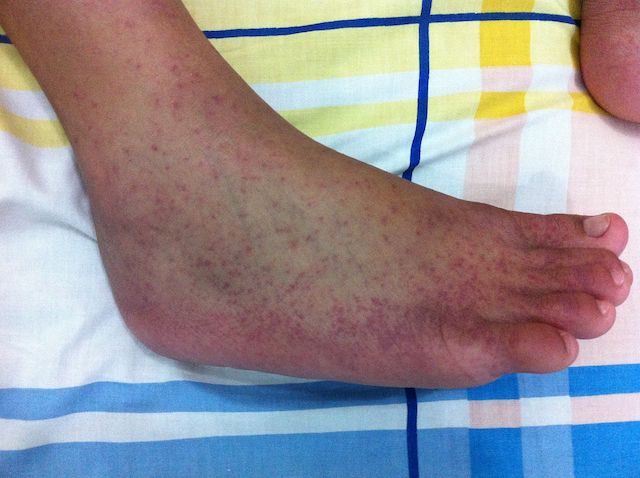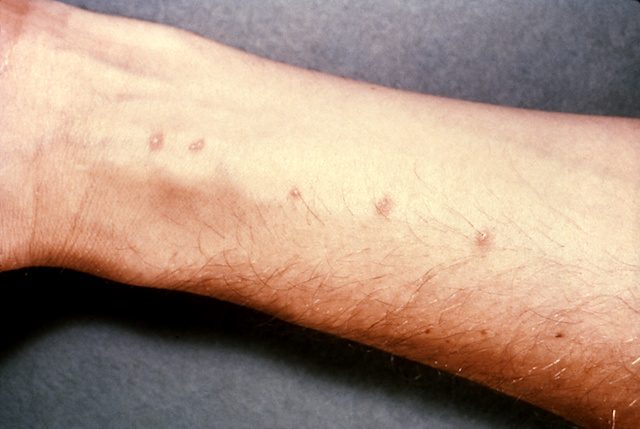What to do if you get a tropical disease and there’s no medicine
When you find yourself in the tropical regions of the world such, as in Southeast Asia, Africa, or Central and South America, one of the biggest concerns you probably have is the risk of getting a tropical disease.
While simply being in the tropics doesn’t at all guarantee that you will get a tropical disease, it’s still important to know how you can prevent or treat them should you succumb to one. In a survival situation, knowing how to treat a tropical disease without medicine is crucial.
In this article, we will outline some of the biggest tropical diseases out there and the symptoms of those diseases, and then discuss treatment methods for each one that don’t require any medication.
Chikungunya

Chikungunya is currently a disease that ravages many in Central America, the Caribbean, Africa, and southeast Asia. Furthermore, researchers believe the viral disease will soon spread to places in Europe and the southern portions of the United States if it hasn’t already.
Chikungunya is transmitted from a mosquito bite and the symptoms include nausea, massive headaches, fevers, rashes on the skin, and terrible pain in the joints.
While the best way to avoid chikungunya is obviously to avoid getting bitten by a mosquito in the first place, if you do become a victim of it, you may be surprised that the best treatment method is actually to consume lots of sugar. There is currently no known vaccine or medical treatment for chikungunya.
Malaria
Malaria is a disease that most people have heard of before. Like chikungunya, malaria is transmitted by mosquito bite and it has ravaged Africa for years, where it is estimated that one person dies from malaria every minute.
Symptoms of malaria include incredible pain in the muscles and abdomen, excessive vomiting, seizures, pounding headaches, and even respiratory and kidney failure. If it goes untreated, malaria can be fatal.
In a survival situation, the best non-medicinal treatment for malaria is going to be to consume cinnamon coil and garlic, if available. In addition, the moment you find your way back to civilization, you need to get to a hospital as soon as possible so you can receive treatment.
Since malaria is contracted from mosquitoes, the best way to prevent yourself from getting it is to keep your skin covered, wear mosquito netting over your face, and cover any exposed skin with mud (which acts as a natural repellent to mosquitoes).
Onchocerciasis
Onchocerciasis is a disease that is most commonly found in Africa and Latin America. It is contracted from a roundworm parasite, which can survive inside the human body for up to fifteen years.
Symptoms of onchocerciasis include very bad itching (so bad that people with the disease will apply red hot steel to the skin to try and stop it), problem seeing, disfiguration of the skin, and in extreme cases, blindness.
There is currently no known cure for onchocerciasis, unfortunately, and the best thing you can do is to get yourself to a hospital. If the itching becomes too unbearable for you to handle, you can do what other people have done and apply a red hot piece of steel (such as a knife or machete blade) to the skin to try and stop it. Yes, this will burn your skin and lead to problems associated with that, but at least it will cause the itching to go away.
The good news is that medication does exist to kill the roundworms that infect your body and cause the disease. The only problem is that it is very difficult for medical professionals to detect these worms in the first place, and multiple tests will need to be conducted.
Schistosomiasis

Schistosomiasis is a disease that infects hundreds of millions of people across Asia, Africa, and South America. The disease is spread from freshwater contaminated by infected snails. Not only is it possible to contract the disease by drinking the contaminated water, but it’s possible to contract it just by having skin contact.
Symptoms of schistosomiasis include lesions on the skin, diarrhea, incredible pain in the abdomen, enlargement of the lever, and bladder infections.
The best non-medicinal treatment for schistosomiasis is to consume a 10 mg dose of myrrh oil each day. Of course, get yourself to a hospital as soon as possible, where they will be able to apply a medication called praziquantel that can stop the effects of the disease.
Trachoma
Trachoma is a disease that affects the eyes and is common in Australia, the Middle East, Asia, Latin America, and Africa.
It is contracted from infected flies that come into contact with a person’s eye secretions. Symptoms of trachoma include the lymph nodes swelling, a rapidly increased heart rate, white colored lumps on the eyelid, and even corneal ulcers. The best non-medicinal treatment for trachoma is to use flaxseeds and apply them directly to your eyes. However, the disease can be prevented in the first place by taking very good care of yourself when it comes to personal hygiene when you are in a tropical region. When you find your way to a hospital, doctors will be able to apply a dose of azithromycin to stop the disease.
Conclusion
Tropical diseases are very serious, and you can’t adopt a “it will never happen to me” approach. Be very conscientious about personal hygiene when you visit a tropical region, and take the necessary steps to avoid contracting any of these diseases in the first place.
If you have any comments then please drop us a message on our Outdoor Revival Facebook page
If you have a good story to tell or blog let us know about it on our FB page, we’re also happy for article or review submissions, we’d love to hear from you.
We live in a beautiful world, get out there and enjoy it.
Outdoor Revival – Reconnecting us all with the Outdoors





